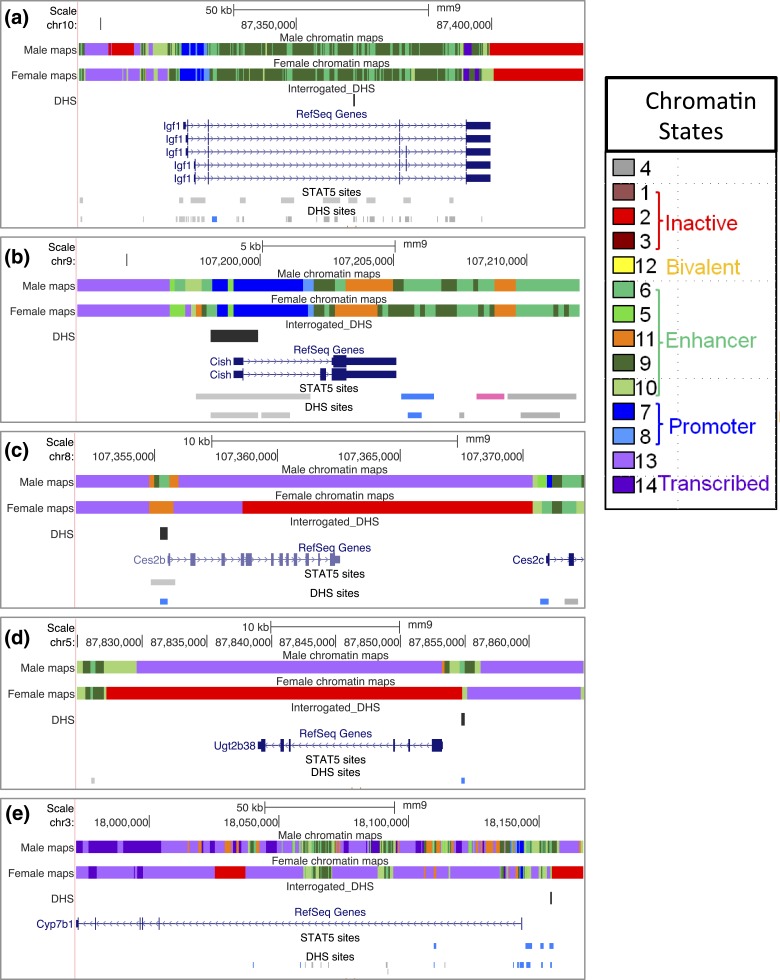Figure 10.
Chromatin states of GH/STAT5-responsive genes. Shown are University of California Santa Cruz mouse genome browser screenshots displaying chromatin state maps for each of the five genes examined in this study, along with the locations of gene-proximal DHS interrogated by qPCR. Also marked are all of the STAT5 binding sites and DHS in the genomic region displayed (bottom two tracks of each panel). Blue indicates a male-biased STAT5 binding site or DHS site, pink indicates a female-biased site, and gray indicates a sex-independent site. Chromatin state maps were discovered using ChromHMM (71) based on genome-wide profiles for DHS and six chromatin marks determined in both male and female liver (70). Each consecutive 200-bp segment of the genome is assigned to one of 14 chromatin states in male liver, and separately in female liver, and is represented by a distinct color, as specified in the chromatin states legend on the right). The 14 states can be grouped into five superstates, three of which are active (enhancer, promoter, transcribed), one is inactive, and one is poised for activation (bivalent). These descriptions reflect the established functional annotations of the major chromatin marks associated with each state. (a) Igf1 is in an active chromatin state in both male and female liver, with large numbers of sex-independent DHS and STAT5 binding sites across the gene body and in the 5′-flank. (b) Cish shows very similar chromatin states in both sexes, and similar to Igf1, is devoid of inactive chromatin states. Cish contains one downstream STAT5-bound male-biased DHS and one downstream female-biased STAT5 binding site, both of unknown significance. (c and d) Ces2b and Ugt2b38 are in an active chromatin state in male liver but have extensive sequence in the inactive state (red) in female liver. These male-biased genes both have very few nearby DHS and STAT5 binding sites. (e) Cyp7b1 is primarily characterized by an active chromatin state in both male and female liver; however, a portion of intron 1 and an extended genomic segment that begins just upstream of the 5′-flank DHS interrogated in Fig. 8 are in an inactive chromatin state (red).

